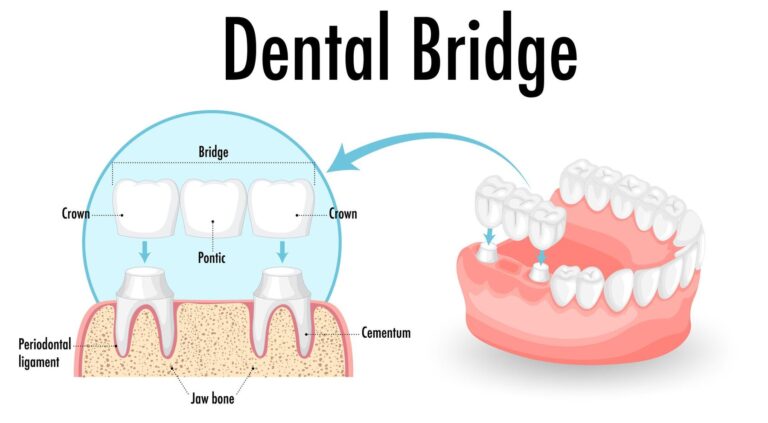Dental treatments like crowns and bridges are key in restoring teeth functionality and aesthetics. If your goal is to protect damaged teeth or replace missing ones, these two options offer practical solutions. Here are their purpose, materials, and applications can help patients make informed decisions about their oral health:
Utilizing Dental Crowns
A crown, sometimes referred to as a dental cap, is designed to cover and protect a damaged or weakened tooth. Often, a dentist may recommend a crown for teeth that have undergone extensive decay, experienced fractures, or received a root canal. While highly effective in saving infected teeth, root canals can leave the tooth structure fragile. Crowns serve as a protective layer that restores strength and allows the tooth to function as it should.
Crowns are available in a range of materials, each with unique benefits. They are designed to mimic the look of a natural tooth. Porcelain crowns, for example, are popular for their ability to blend with surrounding teeth, making them a good choice for those seeking an aesthetically pleasing option. Alternatively, crowns made from materials such as metal or zirconia offer improved durability. This makes them better suited for molars that experience heavy chewing forces.
Understanding Dental Bridges
While crowns are designed to cap individual teeth, bridges address the issue of missing teeth by filling gaps in your smile. A bridge includes an artificial tooth, known as a pontic, which spans the empty space left by the missing tooth. This pontic is supported by the adjacent healthy teeth, or abutment teeth.
Bridges offer both functional and cosmetic benefits for dental patients. Missing teeth, even a single one, can impact the alignment of other teeth and make chewing or speaking difficult. A bridge restores the balance and prevents further dental complications like shifting teeth. Patients often find that bridges not only improve their ability to eat and speak but also boost their confidence by restoring the appearance of their smile.
Similar to crowns, bridges come in different materials. Porcelain bridges are an option for those who want their replacement teeth to look natural. Metal bridges may not be as visually discreet but are valued for their durability. Sometimes, a combination of metal and porcelain is used for a balance of strength and aesthetics.
Working Together
Crowns and bridges frequently complement each other in dental treatments. For example, when bridges are used, the abutment teeth supporting the pontic may require crowns to add strength and stability. This combination ensures the bridge fits securely and performs its intended function effectively.
The process for both crowns and bridges typically spans multiple visits to the dental clinic. During the first appointment, your dentist will prepare the tooth and take impressions for custom-fitting. Temporary restorations may be fitted while waiting for the final lab-made crown or bridge. On the second visit, the permanent restoration is securely bonded to your tooth or teeth.
Explore Crowns and Bridges With Your Dentist
Choosing crowns and bridges can be part of your dental care plan, providing lasting effects on your oral health and overall well-being. These restorative treatments repair and replace teeth. They also help preserve your bite alignment, prevent further complications, and restore confidence in your appearance.
Patients can better appreciate their role in modern dentistry by understanding the purpose and process of these procedures. Take the time to consult with your dentist to discuss the materials and techniques that best suit your individual needs. A brighter, more functional smile is within reach, and these procedures are key tools in achieving it.

